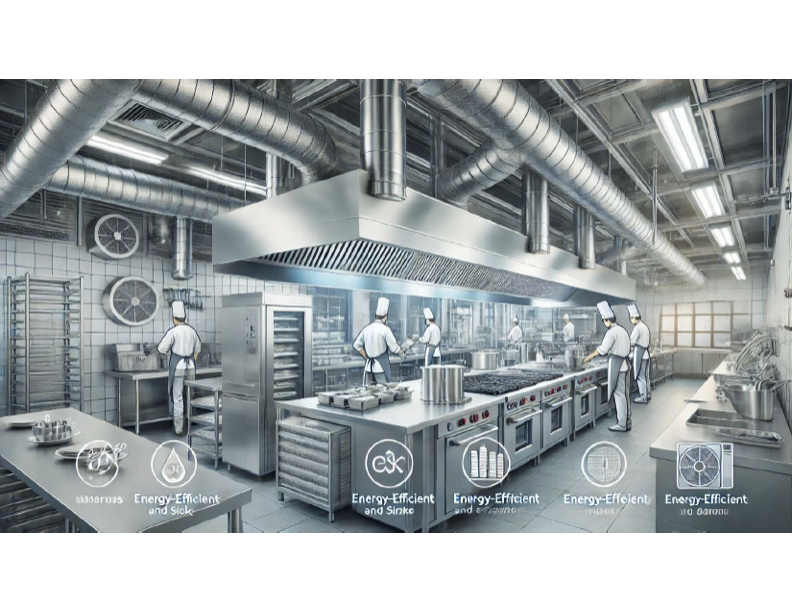When people talk about what makes a great restaurant, they mention the food, the service, the ambiance. Rarely do they talk about the air. But in a commercial kitchen, air quality isn’t just an afterthought — it’s critical. Poor air can wreck your staff’s health, your food’s flavor, and your bottom line.
Let’s break it down.
Why Air Quality Matters in a Kitchen
A commercial kitchen is a pressure cooker of heat, grease, smoke, and fumes. Cooking at high volumes generates a lot of byproducts: carbon monoxide from gas stoves, particulate matter from frying, VOCs from cleaning products, and grease-laden vapors from almost everything.
Without proper ventilation and air filtration, all of this builds up fast. The result? A work environment that’s uncomfortable at best — and hazardous at worst.
The Risks of Bad Air
1. Health Hazards for Staff
Breathing in fumes day after day can lead to respiratory issues, headaches, fatigue, and long-term health problems. In kitchens without good airflow, heat stress is common, especially in the summer. OSHA has guidelines on this, but many kitchens still operate in borderline dangerous conditions.
2. Equipment Strain and Fire Hazards
Grease particles don’t just settle on countertops. They coat vent hoods, ductwork, and HVAC systems — turning your ventilation into a fire risk. If filters aren't regularly cleaned or replaced, airflow slows down, and the whole system starts working harder than it should.
3. Food Quality and Safety
Airborne contaminants can impact food flavor and safety. A smoky kitchen doesn’t just smell bad — it can affect everything from fresh bread to delicate sauces. Cross-contamination through the air is a real thing, especially in tight spaces.
What a Kitchen Needs: The Basics of Clean Air
1. Ventilation Systems
Every kitchen needs a proper exhaust hood system, ideally paired with a make-up air unit that replaces the air being pulled out. Otherwise, you get negative pressure — and that means doors slam, smells leak into the dining area, and the HVAC system gets confused.
2. Air Filtration
High-quality grease filters, carbon filters, and HEPA options can make a huge difference. These trap particles and odors before they recirculate through the space.
3. Regular Maintenance
Even the best systems need upkeep. Filters should be cleaned or swapped out on a schedule. Ducts need inspections. And airflow should be balanced regularly to keep everything running efficiently.
Investing in Air Pays Off
Yes, it costs money to upgrade or maintain your ventilation system. But compare that to the cost of staff turnover, food waste, fire damage, or failed health inspections. Clean air improves worker morale, productivity, and safety — and that shows up on the balance sheet.
Final Take
In the heat and chaos of a commercial kitchen, air quality doesn’t scream for attention. But it touches everything. If you want a kitchen that runs smoothly, safely, and sustainably, start with the air.
Because if your staff can’t breathe, your business won’t either.

